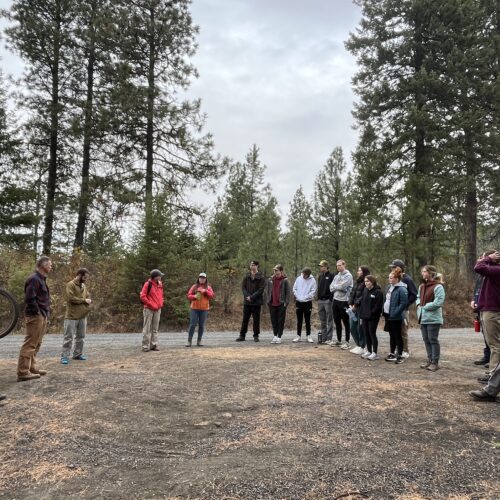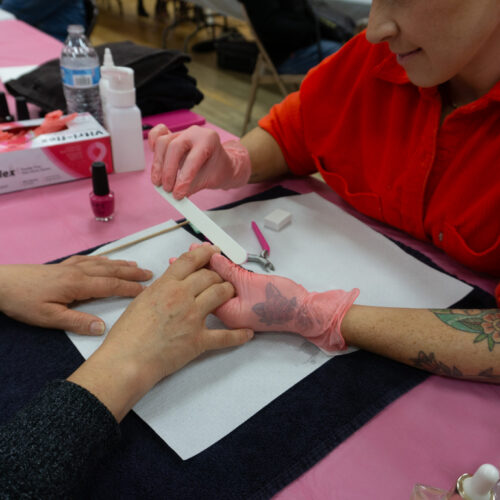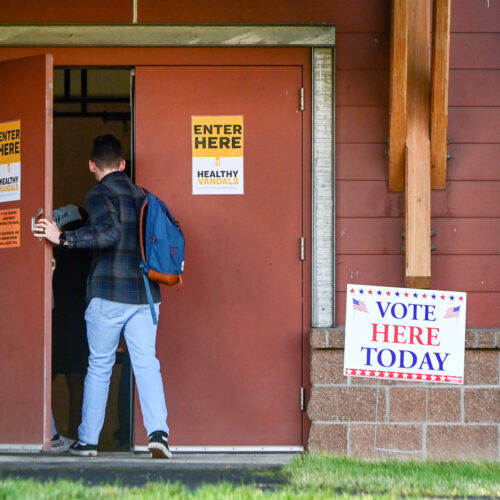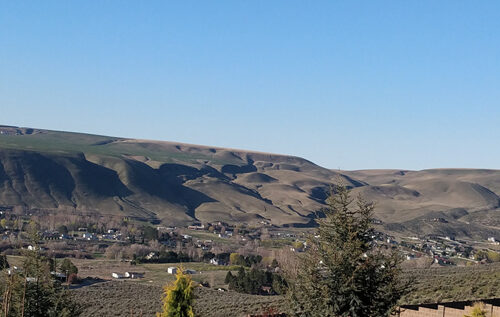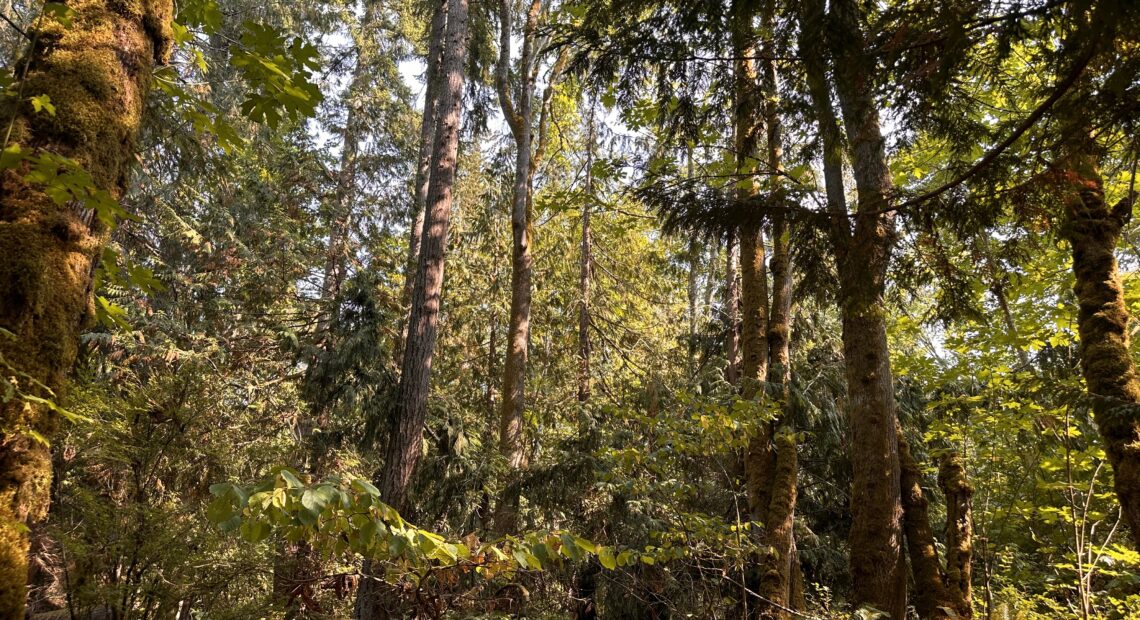
Tales of the forests through which we tromp
Listen
(Runtime 3:51)
Read
Moss drapes over trees in Olympic National Park like the table dressings of fairies and the blankets of sprites. This place inspires writers — from amateurs to poets to public radio reporters — and welcomes visitors each year into its majesty.
Our national parks tend to do that: be places of awe-inspiring beauty, offering great adventures through bushwhacking and overnights surrounded by stars, or casual days trips on paved roads for vehicle passengers to marvel at the great outdoors from the comfort of a sedan.
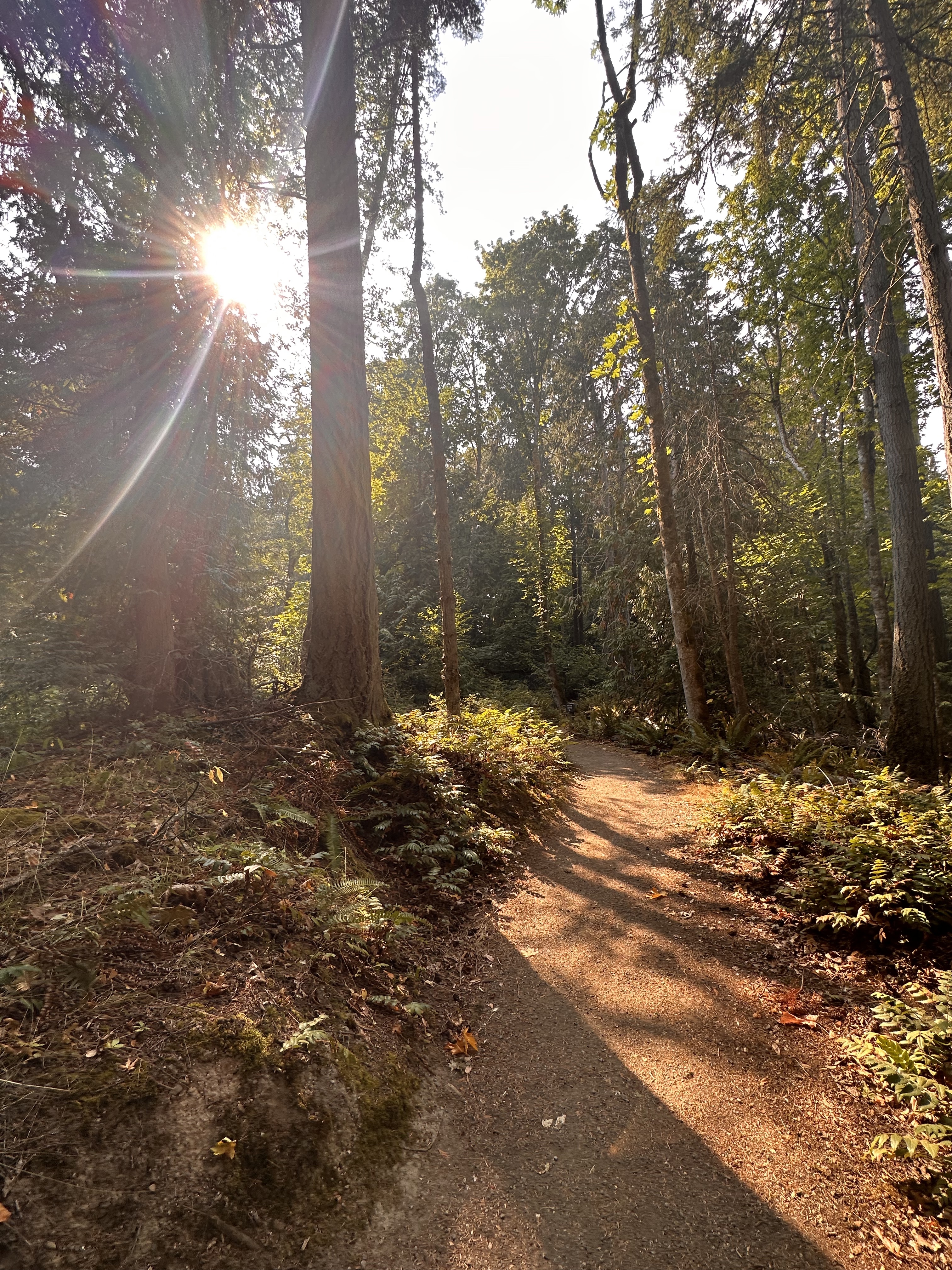
A trail cuts through the wild in Olympic National Park. (Credit: Lauren Gallup / NWPB)
Dave and Ilyssa Kyu tapped into these diverse experiences and shared awe when they crafted the first volume of Campfire Stories, a collection of tales from national parks across the county. The married duo were inspired to collect writings that could be shared around the campfire as a way to honor and learn about the places we adventure to.
“We didn’t really grow up with camping, and fell in love with it as adults, and found ourselves often in national parks and on various camping trips sitting around the fire at night, and not really having stories to tell,” Ilyssa Kyu said. “And we were really curious about the places that we had been traveling to.”
That was in 2018. This year, the Kyus released the second volume of Campfire Stories. With this collection, the Kyus seek to explore different themes through different landscapes, comparing and contrasting the great diversity of the lands the United States has chosen to set aside as wild.
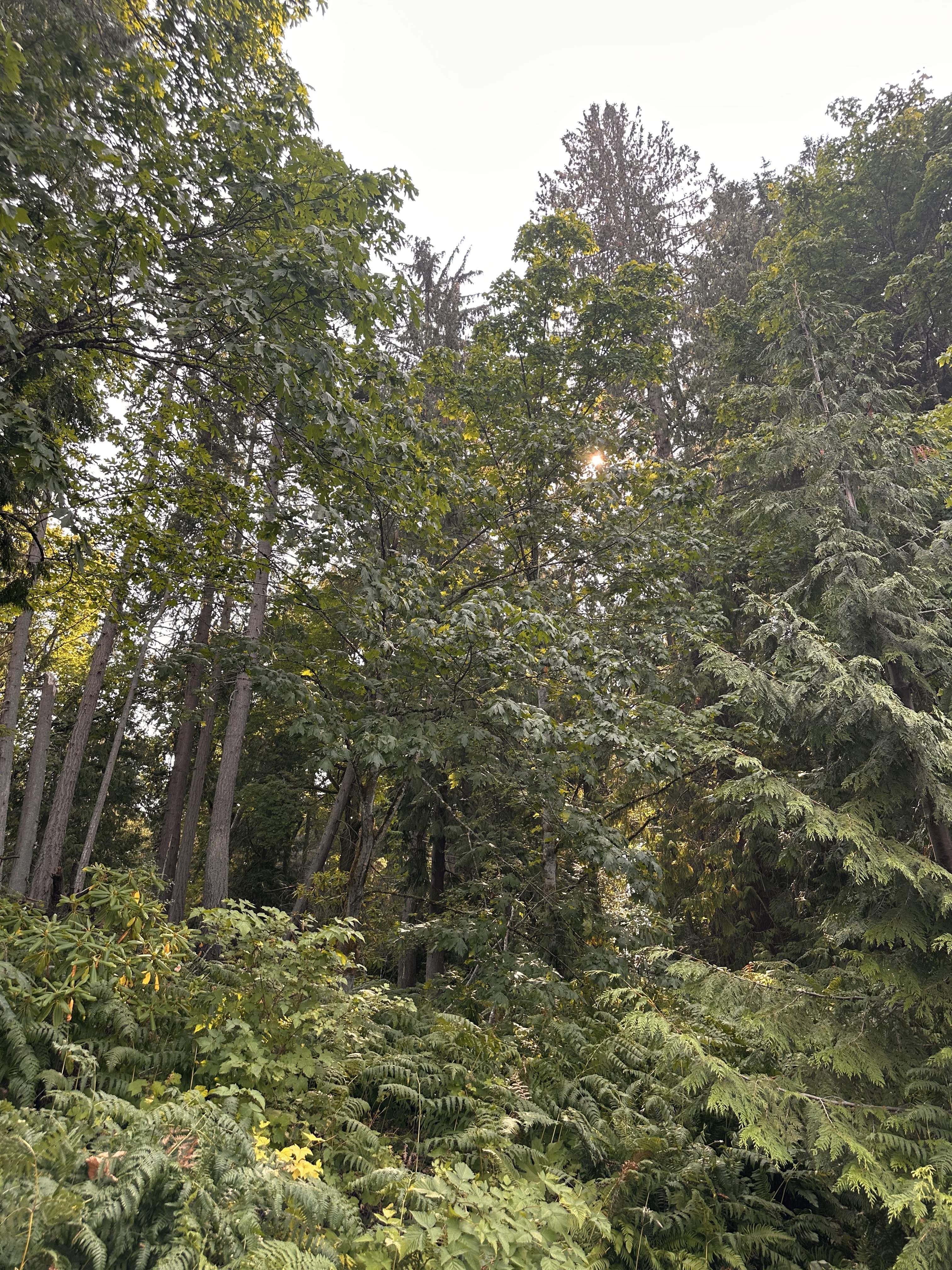
All around the park are a thousand shades of green. (Credit: Lauren Gallup / NWPB)
The volume includes nine pieces of writing for Olympic National Park, a place known for its diverse climate — 95% of the park is designated wilderness.
For the Kyus, the park represents a pivot in their life to something different.
“I think it might have been the park where we decided we were going to commit to something different in our lives,” Ilyssa Kyu said. “We were both sort of in a quarter-life crisis and looking for some new direction or new idea, and I think we just felt really awestruck and inspired by Olympic and the whole Pacific Northwest.”
The mystic Hoh Rain Forest within the park is an environment unto itself — encapsulating visitors within a dome of verity that, as the climate warms, feels ever more ancient.
“The idea of the Hoh Rainforest, of course, is so over the top, lush, that it is something that I thought I should write about,” said Oregon-based poet, Gary Miranda. Miranda’s poem, “Still Lifes: Hoh Rain Forest” is included in the volume. A portion of the poem is excerpted below.
In the photographs of it, you can hardly tell
which sides are up—a commentary both
on the nature of the place and on our compulsive
need to frame things simply, correctly.
The forest is right, I think, in its
refusal—though “forest” is too familiar
a word for what this place with its
hanging, or arching, greenery (like hairy
jump ropes captured at one apogee or
the other) does, or its nurse logs which say
to any come: Here—take root here!
“The theme of that particular poem is the idea that there’s a kind of beauty that is terrifying or frightening in a way almost because it’s just so it’s almost more than you can take in,” Miranda said.
The wildness that is a unique feature of Olympic National Park means visitors seeking to try their hand at adventure might need some more skills and experience than your average day hike or car camping necessitate — something Rosette Royale didn’t feel they possessed a decade ago.
In 2011, Royale was working for Real Change Newspaper in Seattle, when a colleague told them about a vendor named Byrant, an unhoused man, who Royale’s colleague said had incredible knowledge and experience overnighting in Olympic National Park.
Royale connected with Byrant out of journalistic interest, to possibly profile Byrant’s wilderness acumen. But then Byrant invited Royale to join him.
“And I just burst out laughing,” Royale said. “Because. Me? Like, I don’t … I’ve never been backcountry camping. That’s the last thing I’d wanted to do is go camping for more than, like, 15 minutes.”
But Bryant continued to ask, and after four years, Royale decided to go. While out in the wilderness, Bryant left Royale for a little while, and Royale was, for the first time in their life, alone in the woods. Every sound terrified them. Sitting up against a tree, Royale heard a loud buzzing.
“I was so scared,” Royale said. “Then I looked ahead of me, and there, hovering in the air, was this Rufous Hummingbird. It was about the size of an apricot. And the way the light hit it, it was like a gold leaf. It was just like the most beautiful thing … but it still scared me.”
From then on, Royale said they cycled through moments of fear in the wilderness, but they immersed themself in the experience. That first journey with Bryant is documented in Royale’s essay, “Under the Spell of Roosevelt Elk” one of many included in Campfire Stories Volume II.
That transformative journey led Royale to other backcountry trips with Bryant, and eventually, their own solo journey. By sharing this story, Royale said they don’t mean to say everyone has to go backpacking, or take solo wilderness journeys, but, “I think that you can. And if you want to, there are ways to learn, and you just have to — I had to — be open to the experience. That’s how I found myself there. Because I had no intention to do it at all. And yet, that’s what happened,” Royale said.
In selecting writers to include for this volume, the Kyus wanted to ensure they encapsulated different experiences and relationships to the parks.
“At some point in time, someone had to deem something important enough to preserve and save,” Ilyssa Kyu said. “Past generations haven’t always gotten this right.”
In soliciting works, the Kyus gave out three options: submit a previously written story about one of the parks; write a new, commissioned piece about one of the parks; or finally, apply for a travel stipend to experience and write about one of the parks.
The result is a collection of writings as varied as the parks and trails they document, the experiences we have within them and relationships to them.



